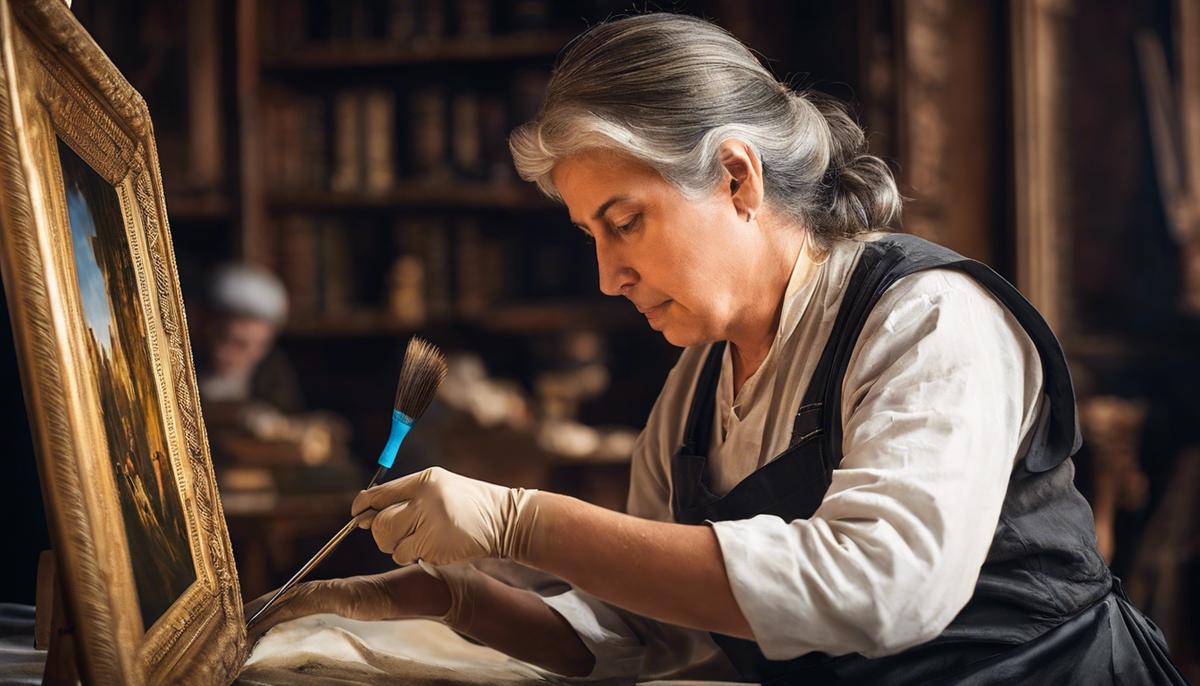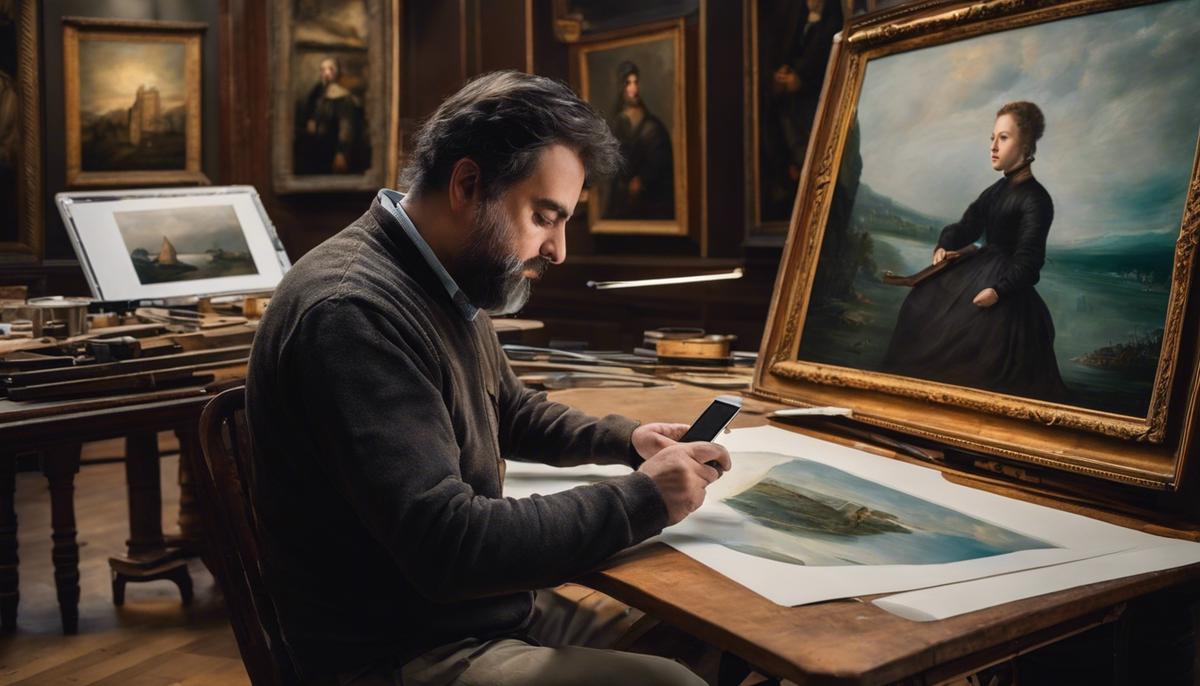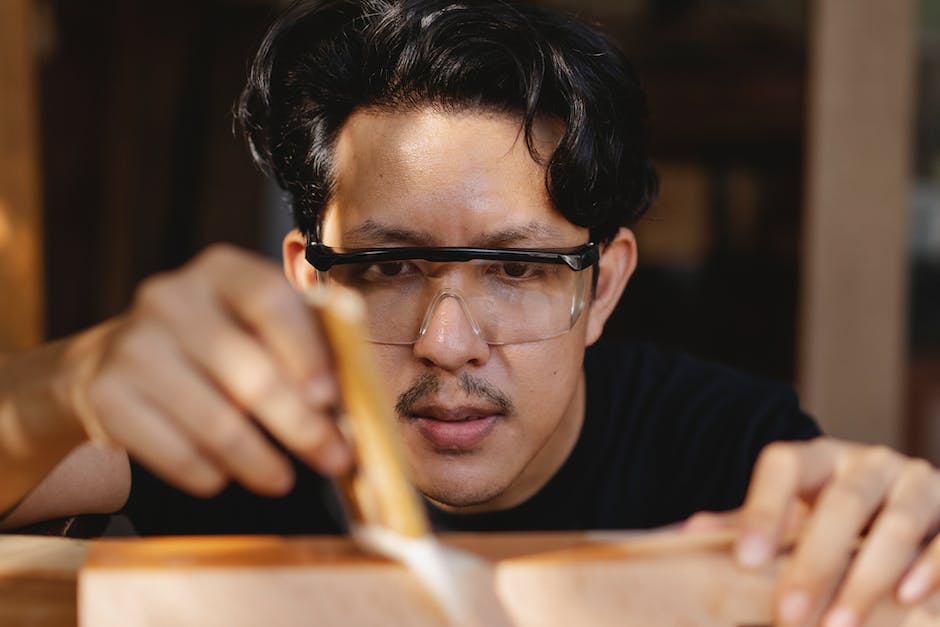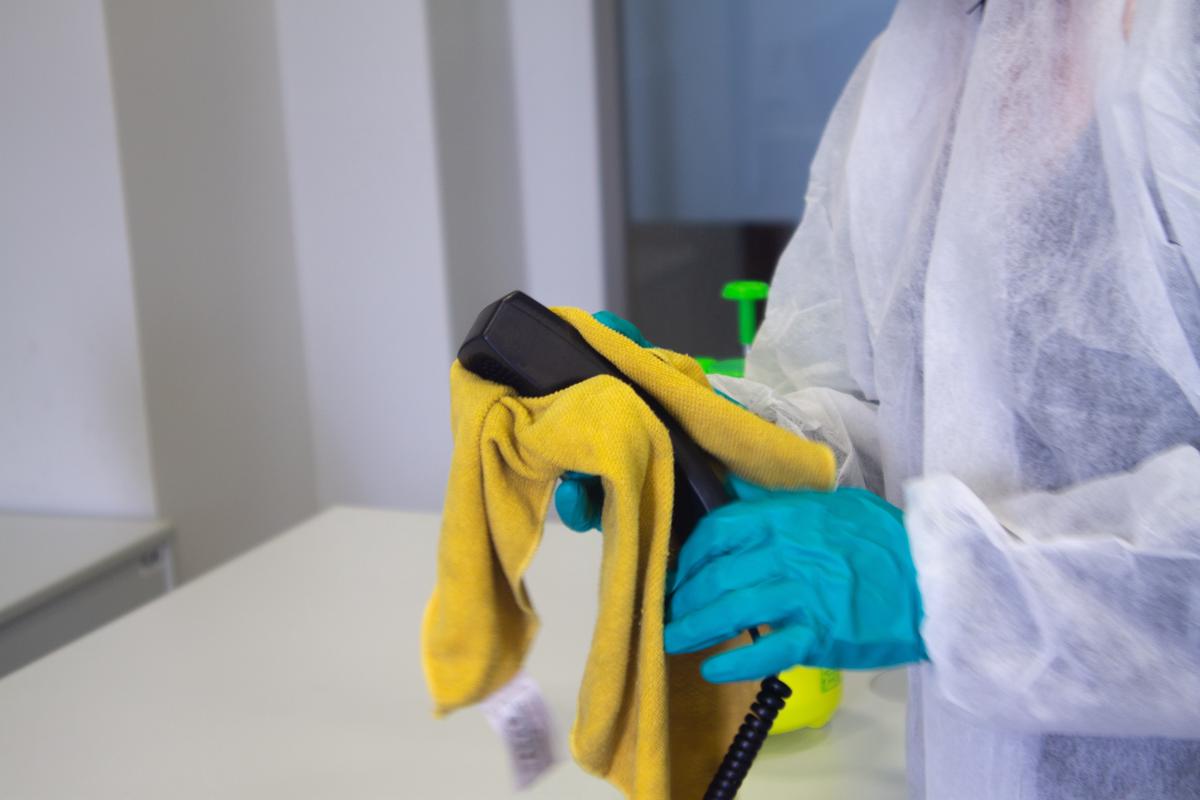In the fine-tuned world of art, creations of sublime beauty often bring equally passionate debates—particularly when it pertains to their restoration. The core contention of the matter seems parred between two opposing ends; the need to conserve artwork for future generations and the requirement to uphold the virtuosity and original intent of the artist. From the hallowed walls of museums to contemporary digital platforms, an ethical dilemma in art restoration persistently gnaws at the conscience of restorers and art enthusiasts alike. This paper intends to explore, not only the moral calculus associated with art restoration but also delve into the profound transformation brought about by technology, before offering an examination of some controversial cases and envisaging the future of the practice.
The Ethical Dilemma in Art Restoration
The Ethical Dimensions of Art Restoration
Art restoration, a discipline dedicated to the conservation and restoration of cultural heritage, often presents formidable moral dilemmas. Inextricably intertwined with questions of science, aesthetics, and historicity, art restoration enters the realm of ethics when the preservation of an artefact’s identity clashes with the imperfections endowed by time, tumult or tragedy.
At the heart of the discourse lies the essential argument between restoration and conservation. Here, it becomes conceivable to question the very ethical fabric of art restoration: To what extent do efforts to enhance, embellish or ‘repair’ dilapidate the original essence of the artefact?
When engaging with a relic of the past, restorers confront a vexing paradox. Each artefact is a reservoir of narratives, a capsule of time, a testament to the artist’s intent and context. The impulse to protect the artefact from the impending deterioration impelled by time or adversities is undeniable, a noble commitment to safeguard the world’s cultural inheritance. Nonetheless, the restoration endeavour often fumbles upon dilemmas that delve deep into the realm of ethics.
In an attempt to rectify and reinstate an artefact to its purported ‘original state’, the act of restoration might employ invasive techniques or introduce new materials. While possibly infusing life into ageing masterpieces, such steps wield a double-edged sword, risking the annihilation – or at the very least, modification – of the artefact’s authentic identity. Each brush stroke or chemical application forever alters the substrate, fusing the restorer’s interpretation with the artist’s original vision. Hence, the restored artefact becomes a new and unique entity distinct from its original embodiment.
Similarly, restoration can redefine the perceived aesthetics of an artefact, reinventing its narrative structure and historical context. Where art restorers choose to efface anomalies or ravages inflicted by time, they inadvertently silence a portion of the artefact’s history. Consequently, the ethical question becomes two-fold: Does such restoration rob the artefact of its rightful historical narrative, and does it conflate the art restorer’s aesthetic bias with the artist’s authentic vision?
Equally controversial is the restorer’s dilemma when restoring lost or stolen artefacts without the necessary context or guidance. The risk of infusing conjecture and assumption into the restoration process becomes glaringly apparent and presents a potential threat to the artefact’s genuine narrative.
Thus, amidst the moral complexities of art restoration, science persists as a powerful ally. Advancements in technology bring forth non-invasive diagnostic tools and innovative materials that minimize the risks of distortion and loss. Through the judicious application of scientific knowledge and a respect for the artefact’s enduring narrative, restorers can strive for an ethical alignment that balances preservation with historicity.
Yet, the conversation about the ethics of art restoration continues, often encompassing more profound sociocultural and philosophical debates. As we ponder, remember that art’s heart resides not in its material existence alone, but in its narratives, its context and its capacity to connect us with the human past in its many shades of brilliance and turbulence. Therefore, the ethical dimensions of art restoration must remain open to continual discourse in our endeavor to preserve and honor our shared cultural heritage.

Impact of Technology on Art Restoration
In the evolving arena of art restoration, technology has recently emerged as a significant force, engendering both remarkable advances and notable challenges. With the aim of providing insight into this technological coalescence with art restoration practice, this article examines the transformative impact shaped by innovations such as infrared spectroscopy, computed tomography (CT) scans, and digital imaging within the realm of art conservation.
A central aspect of these technological advancements lies in the rise of non-invasive methods of examination. Traditional methods of art restoration were often invasive, resulting in inevitable adjustments to the artwork’s identity. Conversely, the advent of infrared spectroscopy, a non-invasive technique that determines the structures of molecules, has drastically reduced the prospect of altering an artwork’s original identity. This technology uses infrared radiation to trigger vibrations in a molecule’s structure, revealing hidden layers previously undetectable to the human eye, all without touching the surface of the artwork. This helps conservators discern between original and non-original materials, and thus restore the artwork without unnecessary distortion.
Likewise, the use of computed tomography (CT) scans has become an invaluable tool in the detection of structural issues and the identification of materials used in artwork. The technology, more commonly associated with medical diagnostic processes, has demonstrated its efficacy in building precise, three-dimensional reconstructions of artwork, assisting conservators in understanding its original structures and revealing obscured features. These insights allow conservators to adopt preservation strategies that maintain the structural integrity while also preserving the aesthetic properties of the artwork.
Digital imaging, another transformative technology in the art restoration process, has notably enhanced the precision in colour correction and material identification, contributing to the preservation of an artwork’s original identity and historical context. This technology, in synergy with machine learning, can simulate a variety of possible restoration methods before actual restoration work begins, thereby reducing the risk of an inappropriate intervention.
We must also acknowledge, however, the trepidations that these advancements could compromise the authenticity of artwork by creating accessible replication means. While such scepticism is justifiable, it’s noteworthy that the aim of these technologies is not to create an exact replicate but to use the inherent data to guide a more refined process of restoration, thus upholding the original intent and authenticity of the artist. Concerns about the potential misuse of these technologies underscore the importance of rigorous discussion and supervision within the field.
In conclusion, the advent of technology has revolutionised art restoration, providing practitioners with novel means to examine, preserve and restore valuable artwork. With an emphasis on non-invasive techniques, precise analysis, and data-driven strategies, the field of art restoration is well-equipped to continue its critical role in honouring and preserving our shared cultural heritage. Emphasis on open discourse will ensure that these cutting-edge technologies are applied thoughtfully and ethically, reinforcing the essential balance between preservation and the respect for an artwork’s original identity.

Case Studies of Controversial Art Restorations
The Scrutinisation and Evaluation of Remarkable Art Restoration Cases: Continuation
A discerning look at some of the widely critiqued art restorations in recent times offers a rich perspective on the complexities and dynamics that play a role within this field. A substantial part of this is the procedural aspects of restoration – the methods and tools utilised that influence the delicate balance between preserving and modifying the original quality of the artwork.
An innovative, yet crucial, aspect of contemporary art restoration is the employment of non-invasive methods of examination. These methodologies, unlike their invasive counterparts, enable professionals to perform a detailed assessment of the artwork’s condition and properties without risking any profound alteration or damage. This approach greatly enhances the process of restoring the artwork to its former glory, while ensuring that the original essence is kept intact.
Infrared spectroscopy is one such non-invasive method with considerable value. The technique, which utilises infrared radiation to identify the chemical compounds in an artwork, has a profound impact on preserving the original identity of an artefact. The gathered information helps the restorers to devise a non-intrusive restoration method and to avoid incompatible restoration materials.
Another promising tool in modern art restoration is the use of computed tomography (CT) scans. The importance of CT scans extends beyond the medical field. In art restoration, this technique illuminates the structural composition of the artwork, aiding in the detection of underlying structural issues and material identification. This procedure, therefore, facilitates an informed, strategised restoration that takes the core nature of the artwork into account.
In this age of digitisation, the transformative impacts of digital imaging in art restoration cannot be understated. From aiding in color correction to revealing the material composition of an artwork, digital imaging tools offer unprecedented convenient and precision. It is an excellent example of how technology assists in preserving and revitalising art without disturbing its original essence.
However, like every coin has two sides, the advancement in technology also opens up concerns about its potential misuse during art restoration. The importance of open discourse is thus emphasised in this context. By encouraging dialogue, every stakeholder, including restorers, owners, and audience, can voice their views, ensuring a well-rounded, considerate decision-making process.
The role of technology in art restoration has indeed brought about a paradigm shift in preserving cultural heritage. It has offered the field not only effective tools to work with, but also ethical constructs to adhere to. Through honouring an artwork’s original identity, technology obliges restorers to contemplate deeply the ethical implications of their interventions when attempting to revive works of art.
In conclusion, the examination of recent, widely critiqued art restoration cases introduces us to the many nuances of this essential task. The relationship between art and science is vividly portrayed in these instances, and it reminds us that the restorer’s role is not just that of a conservator, but also of a custodian of our shared cultural heritage.

Future of Art Restoration
Art restoration in the 21st century stands at the crossroads of traditional methodologies and the emergent realm of technological innovation
.This amalgamation of bygone and futuristic practices is reshaping the landscape of the discipline while igniting myriad debates
.Redefining the boundaries of ethical, aesthetic and historical possibilities, art restoration is inexorably bending towards a progressive era, where science and technology expand the horizons of capability
.Artificial Intelligence (AI) modelling is playing an increasingly prevalent role in art restoration and preservation
.When merged with careful human supervision, AI can seamlessly reconstruct faded fragments or extend the edges of a historic masterpiece, enhancing its readability while maintaining fidelity to the original composition
.Hence, AI is growing not only as a tool but also as a collaborator, capable of making meaningful contributions to the visual coherence of artworks
.Interactive and immersive technologies, such as Virtual and Augmented Reality (VR/AR), also hold tremendous potential
.Reconceptualized as recovery tools, they can provide a remarkably authentic interpretation of how damaged works might have originally looked or been experienced
.This new wave of digitisation hence could allow us to tread the delicate line between engaging historical reconstruction and pedagogical innovation, without physically altering the artefacts
.While these technical advancements promise astonishing possibilities, ethical questions surround their scope
.Is a restoration accurate if it is based on a computer-generated approximation
?Where does one draw the line between interpretation and manipulation of cultural artefacts
?Is virtual authenticity an acceptable trade-off for physical authenticity
?The rigorous standards and procedural principles in the professional code of ethics stress informed decision-making and the least possible intervention to balance conservation and aesthetic coherence
.Ethical considerations must also encompass the respect for the integrity of the original work and the minimisation of interpretative guesswork during reconstruction
.The importance of training and educating future restorers to approach their occupation with a deep understanding of these ethical practices cannot be overstated
.Striking a balance between scientific advancement and the preservation of original integrity will be central to steering future professionals
.In a rapidly digitalising world, the future trajectory of art restoration is projected to evolve multi-dimensionally with an intensified discourse between the entwining landscapes of art, science, and technology
.A proactive embrace of innovation, when tempered with an unwavering commitment to ethical values, can assure a sustained and meaningfully interpretive future for the love of lost and found art
.
Art and its restoration, fundamentally being subjective domains, are unlikely to ever attain a consensus on matters of ethos, methodology, or its future. However, as with all other aspects of human endeavour, change is inevitable—even in a domain as steeped in tradition as art restoration. It is prudent to focus on fostering a more informed, considerate, and ethical restoration practice that continuously evolves with the progressing technology and understanding. Ultimately, the purpose of art—to evoke, to educate, and to endure—must hold paramount. From instances of controversial restorations to the potential offered by new technology, the aim is to evolve without losing sight of this overarching purpose, thereby ensuring that the beauty of the past seeps seamlessly into the future.























